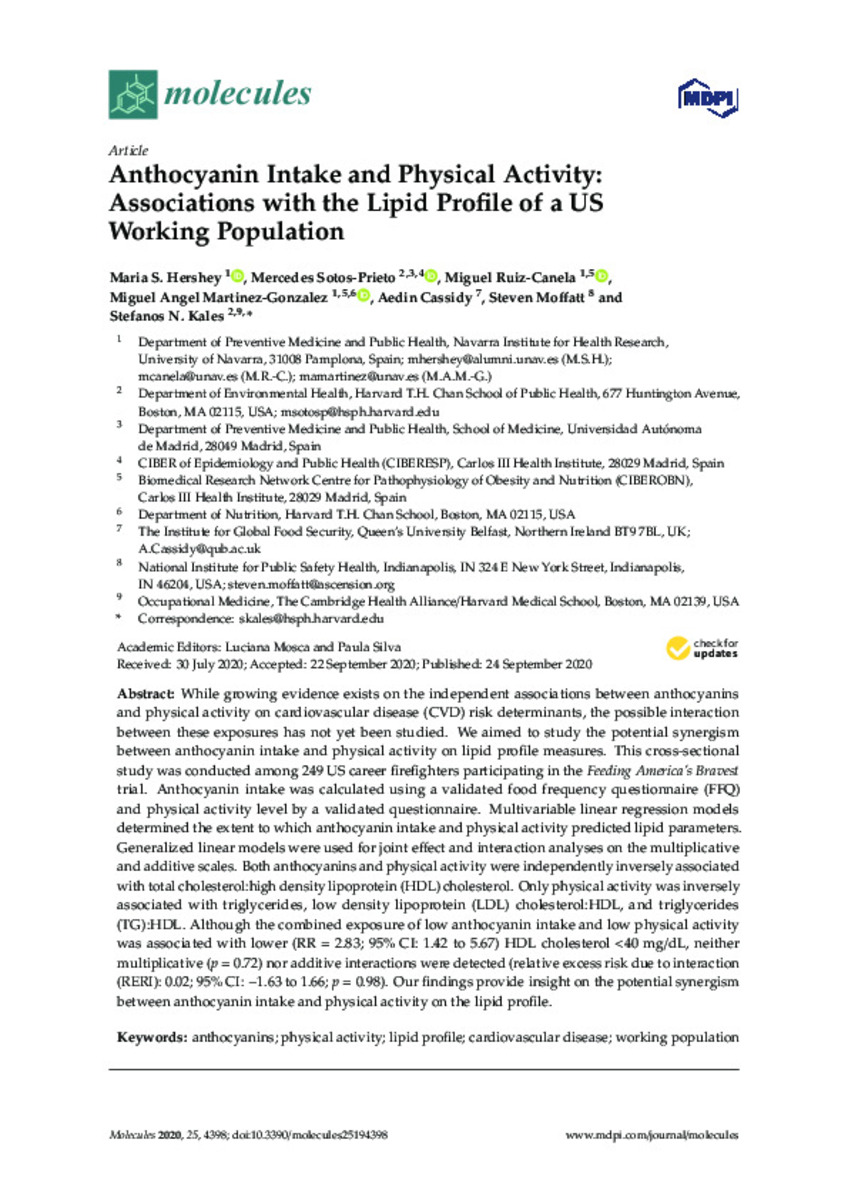Anthocyanin Intake and physical activity: associations with the lipid profile of a US working population
Keywords:
Anthocyanins
Cardiovascular disease
Lipid profile
Physical activity
Working population
Note:
This article is an open access article distributed under the terms and conditions of the Creative Commons Attribution (CC BY) license
Citation:
Hershey-de-la-Cruz, M.S. (María Soledad); Sotos-Prieto, M. (Mercedes); Ruiz-Canela, M. (Miguel); et al. "Anthocyanin Intake and physical activity: associations with the lipid profile of a US working population". Molecules. 25 (19), 2020, 4398
Statistics and impact
0 citas en

Items in Dadun are protected by copyright, with all rights reserved, unless otherwise indicated.








